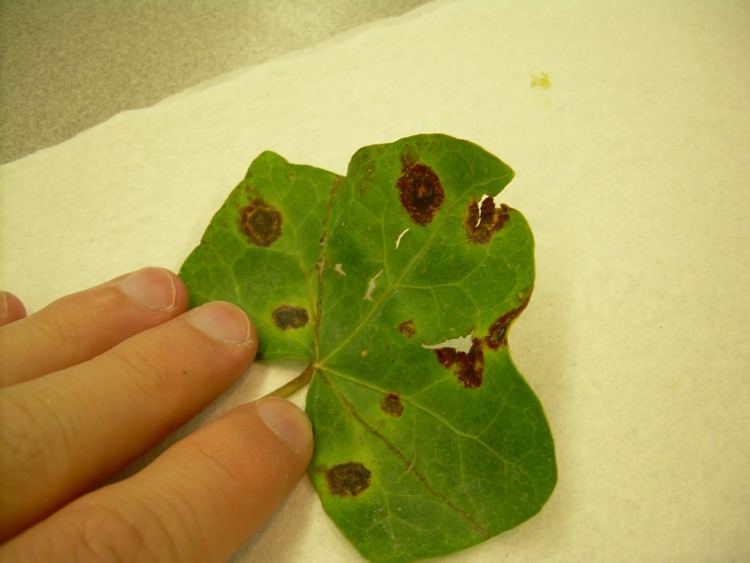Phylum Proteobacteria | ||
 | ||
Bacterial blight of cotton is a disease affecting the cotton plant resulting from infection by Xanthomonas citri pathovar malvacearum (Xcm) bacteria.
Symptoms
The bacteria can affect the cotton plant during all growth stages, infecting stems, leaves, bracts and bolls. It causes seedling blight, leaf spot, blackarm (on stem and petioles) and boll rot. On cotyledons small, green, water-soaked rounded (or irregular) spots form which turn brown. Cotyledons can be distorted if the infection is intense. Black and elongated lesions can girdle the hypocotyls and kill seedlings. On the leaves, scattered small dark-green, water-soaked, areolate spots, form measuring 1–2 mm on the lower surface, which appear translucent against transmitted light. The spots increase in diameter to 5 mm, become angular (due to leaf veination), brown and later turn dark brown to blackish, becoming visible on the upper surface. On susceptible cultivars numerous spots can occur, causing chlorosis, necrosis and distortion, and eventually defoliation.
